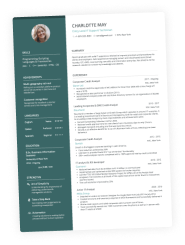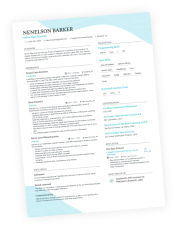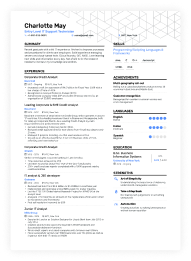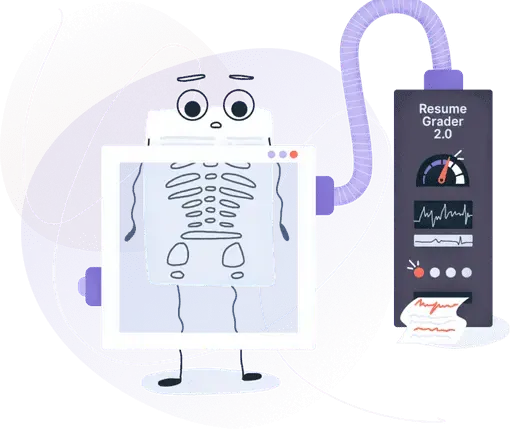7 Proven Ways to Show Adaptability on Your Resume in 2025
Practical strategies and real examples to showcase flexibility, growth, and resilience.
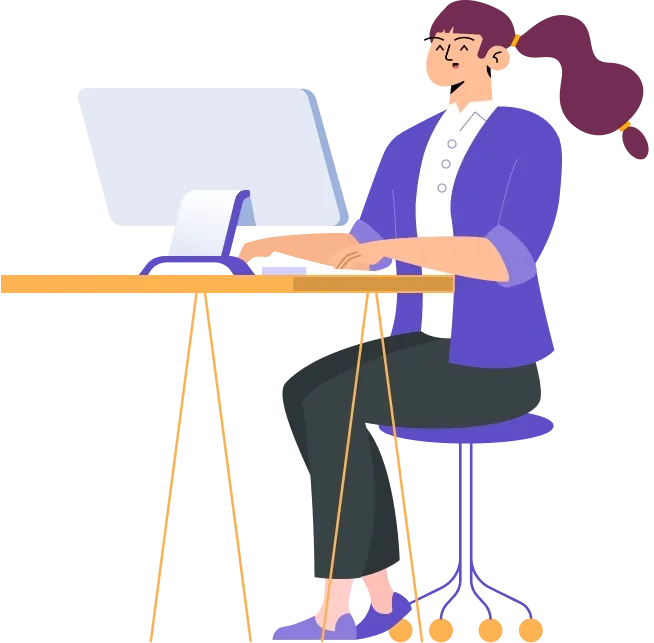

Is your resume ATS-friendly?
Drop your resume here or upload a file to find out if the skills in your resume are readable by an ATS.
Adaptability isn’t just a buzzword—it’s a make-or-break skill for career growth.
As industries evolve and companies face everything from digital transformation to global restructuring, the need for adaptable professionals has skyrocketed. Whether you're managing hybrid teams, learning new tools, or shifting strategies, how you navigate change determines how far you go.
Still, many job seekers don’t know how to reflect that on their resumes. They rely on vague claims like “fast learner” or “team player,” which fail to stand out in a sea of similar applicants.
This guide walks you through exactly how to showcase adaptability resume skills—with structure, examples, and proof. You’ll also learn how to develop, apply, and measure adaptability in a meaningful, results-driven way.
Key takeaways
- Adaptability is one of the most in-demand soft skills—vital for career growth in dynamic work environments.
- It’s built from core competencies like communication, resilience, problem-solving, and learning agility.
- Hiring managers want proof—use real-world examples and measurable outcomes.
- Frame your adaptability using the “Before → Pivot → Result” storytelling format.
- Reinforce adaptability across your resume: summary, experience, skills, and achievements.
- Continuously build adaptability through feedback, mentorship, and cross-functional collaboration.
- Measure and improve adaptability using self-assessment, project metrics, and 360-degree feedback.
Definition and importance of adaptability skills
Adaptability skills refer to your ability to adjust, evolve, and remain effective in the face of change. That might mean learning a new tool quickly, navigating a team reorganization, or responding calmly during a crisis.
Adaptability is a composite skill made up of:
- Communication and interpersonal skills
- Emotional intelligence and resilience
- Problem-solving and critical thinking
- Organization and conflict resolution
- Transferable skills that apply across roles or industries
Employers value adaptability because it supports:
- Team collaboration under shifting priorities
- Crisis management during high-pressure scenarios
- Career advancement in fast-changing industries
Ultimately, adaptability isn't just about handling change—it’s about turning it into opportunity. In today’s job market, that mindset is what differentiates forward-thinking professionals from stagnant ones.
What are adaptability skills for a resume?
Adaptability resume skills demonstrate how well you manage change, uncertainty, and new demands. These skills are especially valuable when applying to roles where technology, processes, or goals frequently evolve.
Instead of listing “adaptable,” show what that looks like in practice:
Right:
“Upskilled in project management software within 10 days, enabling 100% on-time delivery for remote team initiatives.”
Wrong:
“Adaptable and flexible in all situations.”
Adaptability is only compelling when paired with action and outcome. Recruiters want to understand not just that you can adapt, but what results came from it.
When should you highlight adaptability skills?
You should highlight adaptability when:
- The job description mentions “flexibility,” “multitasking,” or “dynamic environment.”
- You’ve handled recent role transitions, new technologies, or team restructuring.
- You’re switching industries or adapting to remote/hybrid models.
- You’ve been part of a company pivot, crisis response, or product relaunch.
These contexts provide the best opportunities to demonstrate your capacity to evolve and succeed. It’s also smart to call out adaptability if you're a career changer, freelancer, or startup employee, where change is constant.
Career changers in particular, can show adaptability by highlighting how they've transferred skills across roles or industries to create fresh value.
Adaptability skills in the workplace
In professional settings, adaptability supports high performance, innovation, and resilience. Teams that adapt quickly can manage disruption better and respond to evolving market needs with confidence.
Examples of adaptability in the workplace include:
- Active listening when joining a diverse or global team.
- Emotional adaptability when managing team morale during layoffs.
- Nonverbal communication that supports empathy in leadership.
- Critical thinking that reframes setbacks into new strategies.
- Feedback-driven collaboration in cross-departmental projects.
- Interpersonal skills that help resolve conflict during uncertainty.
These skills help foster a culture of innovation and responsiveness. For instance, in a globalized workplace, being open to different cultural perspectives can improve collaboration and product development. During mergers or restructurings, emotionally adaptable leaders help teams remain calm and focused.
Adaptability also enhances strategic decision-making. When business priorities shift unexpectedly, those with strong adaptability and leadership skills can realign teams, clarify new goals, and execute without delay.
Examples and types of adaptability skills
Adaptability includes a wide set of abilities. Understanding these helps you choose what to emphasize based on the job you're targeting.
Common types of adaptability skills
- Problem-solving skills: Identifying challenges and finding workable solutions.
- Learning agility: Picking up new skills or tools quickly.
- Creative thinking: Finding alternative approaches when plans shift.
- Open-mindedness: Welcoming diverse perspectives or methods.
- Organizational skills: Re-prioritizing tasks under tight timelines.
- Strategic thinking: Pivoting while keeping goals in sight.
- Conflict resolution: Addressing friction in fast-changing teams.
- Resilience and stress management: Maintaining performance under pressure.
Resume examples:
“Reorganized campaign priorities after budget cuts, increasing ROI by 28% with fewer resources.”
“Introduced a revised training process during the onboarding overhaul, improving ramp-up time by 40%.”
“Resolved interdepartmental tension by initiating weekly alignment meetings, reducing miscommunication by 60%.”
By showcasing these types, you paint a more complete and compelling portrait of your ability to thrive in motion.
Don’t just say you’re adaptable—prove it by showing what changed, what you did, and what happened next. Buzzwords like “fast learner” or “team player” are filler unless they’re tied to outcomes. Want to stand out? Show how you turned chaos into clarity or made a pivot that paid off. Adaptability isn’t about being agreeable—it’s about being effective when the script gets flipped.
Writer’s take
7 ways to highlight adaptability on your resume in 2025
Adaptability has evolved from a “nice-to-have” into one of the most sought-after soft skills in today’s job market. But saying you’re adaptable isn’t enough—your resume needs to prove it. Below are seven practical, high-impact strategies to help you showcase your adaptability with clarity, confidence, and results.
1. Use real-world examples from diverse industries
Recruiters want to see how you’ve adapted in real scenarios. Show it with variety and specificity. Think about projects where you had to learn something quickly, step into an unfamiliar role, or respond to unexpected changes in timeline or scope.
For example, if you worked in both education and healthcare, you might highlight how you transitioned your communication style and problem-solving approach across sectors. If you moved from a startup to a corporate environment, explain how you adjusted to new workflows and team structures.
Example:
“Transitioned customer support from in-person to virtual channels within two weeks, maintaining a 97% satisfaction rating.”
2. Tell your adaptability story with the “Before → Pivot → Result” format
This structure brings clarity and persuasion to resume bullets. It walks hiring managers through the change you encountered, the adjustments you made, and the impact of your response.
Example:
“Faced a 40% drop in site traffic after algorithm changes → led SEO overhaul → traffic rebounded 60% in three months.”
This format also works well in cover letters, providing space to explore emotional intelligence and teamwork in the narrative.
3. Highlight essential adaptability skills
Group your adaptability-related abilities under themed skill headings or within bullet points tailored to the role.
Use terms like:
- Learning agility
- Remote operations
- Cross-functional collaboration
- Workflow optimization
- Creative problem-solving
Tailoring these terms to the job description helps your resume pass applicant tracking system (ATS) screenings while catching the recruiter’s eye.
4. Quantify your adaptability with clear metrics
Whenever possible, tie your adaptability to real outcomes. Numbers help validate your contribution.
Examples:
- “Introduced new scheduling system, reducing downtime by 35%.”
- “Managed hybrid rollout across 3 departments, improving cross-team response times by 22%.”
Metrics prove that your flexibility delivered impact, not just that you “did your best.”
5. Place adaptability across multiple resume sections
Let adaptability echo throughout your resume, not just in the resume skills section.
Resume summary
- •Adapted production calendar in response to unexpected vendor delays, reallocating resources and adjusting timelines to ensure 100% on-time Q2 output.
- •Streamlined inventory workflow by introducing a cross-functional review system, cutting excess stock by 18%.
- •Collaborated with procurement and logistics teams to establish contingency protocols, reducing future supply disruptions by 25%.
Dedicated skill section
6. Avoid generic phrases
Vague, overused terms won’t stand out. Be precise and outcome-focused.
Ineffective:
“Thrives in fast-paced environments.”
Effective:
“Led a five-person team through a remote system migration, delivering all KPIs on time under a compressed timeline.”
Generic phrases miss the point—they don’t show how you adapted, only that you claim to.
7. Tailor your adaptability to the job
Different industries expect different forms of adaptability. Match the tone and examples to the role.
- Tech roles: Highlight rapid tool adoption and iterative workflows.
- Customer service: Emphasize emotional intelligence and real-time problem-solving.
- Project management: Focus on crisis handling, scope pivots, or resource allocation.
Tailored examples feel more authentic and increase your chances of getting an interview.
Improving and developing adaptability skills
Adaptability is a learnable skill.
Here’s how to strengthen it:
- Seek feedback: Use reviews and retrospectives to identify how you handle change.
- Pursue cross-functional projects: Build new muscle memory for collaboration.
- Develop a growth mindset: See new challenges as opportunities.
- Join mentorship programs: Learn how seasoned professionals navigate ambiguity.
- Create a personal development plan: Focus on communication, emotional control, and flexibility.
- Experiment intentionally: Try new tools, lead small initiatives, or propose changes in workflow.
- Invest in continuous learning: Take courses, read case studies, and stay current on workplace trends.
Adaptability improves with practice. The more often you say “yes” to unfamiliar tasks and situations, the more confident you’ll be when change arises.
Measuring and assessing adaptability
Adaptability is a soft skill, but it’s measurable.
How to assess your adaptability
Self-assessment:
- Reflect on how you've handled sudden changes or feedback.
- Keep a log of project shifts and your role in resolving them.
Feedback-driven evaluation:
- Use 360-degree feedback to get team-wide insights.
- Request adaptability-specific input during performance reviews.
Quantitative tracking:
- Link your actions to measurable objectives.
- Use project tracking to highlight how you responded to scope changes.
- Document quantifiable accomplishments: time saved, processes improved, stress reduced.
For resumes and ATS optimization:
- Include action words: “adapted,” “responded,” “led transition,” “pivoted”
- Mention outcomes: “cut delays,” “improved speed,” “increased satisfaction”
The more clearly you can articulate your adaptability, the more confident hiring managers will be in your ability to thrive.
Conclusion: Adaptability sets you apart
Adaptability is more than a resume skill—it’s a professional mindset. It means staying calm under pressure, learning on the fly, and leading through transition. In 2025 and beyond, those who adapt will rise.
To get there, your resume must do more than say “adaptable.” It needs to show it, with specific examples, structured storytelling, and quantifiable success.
PRO TIP
Why not build your new resume usingEnhancv’s AI Resume Builder and stay ahead of the game?
Make one that's truly you.

